Unravelling the mystery behind 19th century boat tragedy on Strangford Lough
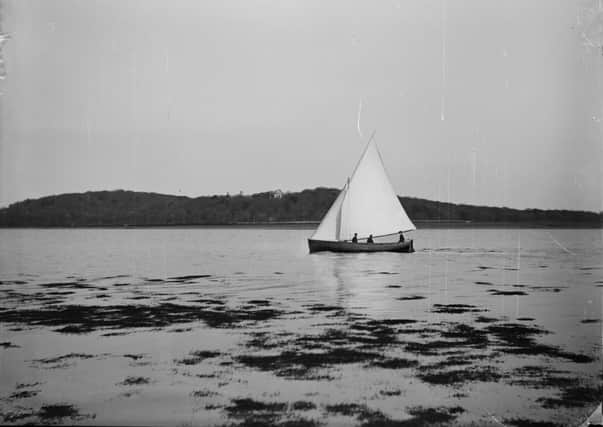

On April 11, 1895, eight people died on Strangford Lough after a boat belonging to the owners of Mount Stewart sunk.
Neither the boat nor four of the bodies have ever been found, though a group of volunteers have made progress in unravelling the mystery.
Advertisement
Hide AdAdvertisement
Hide AdTheir research over the past six years forms a new exhibition at Mount Stewart, though their investigations began purely by chance.
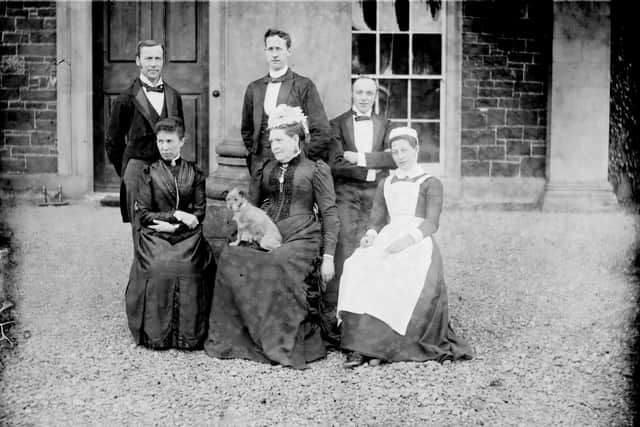

One of the researchers, John Orr, said a group had been walking along with lough shore when they spotted a memorial cross to the disaster near Mount Stewart, now a National Trust house, in 2015. They were intrigued, as many will be, by the story which has almost dwindled out of existence with the passing of time.
The cross was erected by the Marquis and Marchioness of Londonderry in “affectionate remembrance” of Eliza Taunt, Elizabeth Dougal, Joseph Grainge, William Rowe, William and Robert Hagan, who drowned in Strangford Lough on the April 11, 1895.
The four servants from Mount Stewart and two local boatmen (the Hagans), together with two servants visiting from Florence Court House in Fermanagh – Jane Cheshire and William Start – had perished together in the waters over 125 years ago.
Advertisement
Hide AdAdvertisement
Hide AdThe party had set off on a picnic outing on the lough aboard the ‘Mountstewart’, which was Lady Londonderry’s yacht, and never returned.
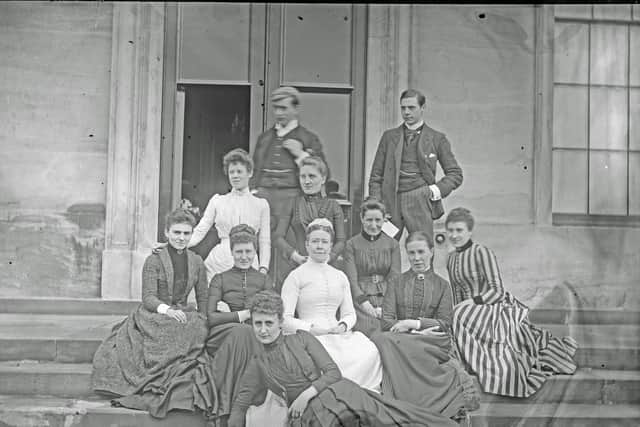

John tried to explain why the story has been largely forgotten: “Few people know this story, even family descendants are only very vaguely aware of it.
“The event was widely reported at the time in the papers here, nationally as well.
“I think it was different back then. There was a different coping psychology. They didn’t like to talk about things. They were reported at the time then they moved on.
Advertisement
Hide AdAdvertisement
Hide Ad“It’s been a mixture of time passing, it not being talked about, awareness just dwindled. The memorial was always there but that was about it.
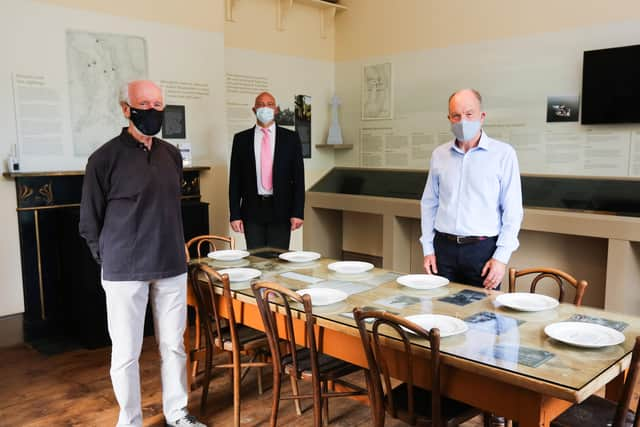

“We were walking along the foreshore, looking at old slipways and jetties and archaeological artefacts. We were looking at the jetty at Mount Stewart. Going to the jetty you pass by the memorial. We stopped and thought ‘Gosh, that’s interesting’ – we knew next to nothing about it.
“Once we got a toehold in a few basic facts the project just diverged in opportunities and things to investigate. We didn’t plan to pick up the project, it’s not easy to find a new topics to research or investigate.
“We’d tripped over a relatively untouched project which we were brought into by enthusiasm and fascination.”
Advertisement
Hide AdAdvertisement
Hide AdThe research group began as three people but has grown to a team of seven. One of their most satisfying discoveries was an oar from the boat which had been stored in a farmer’s barn on the Mount Stewart estate.
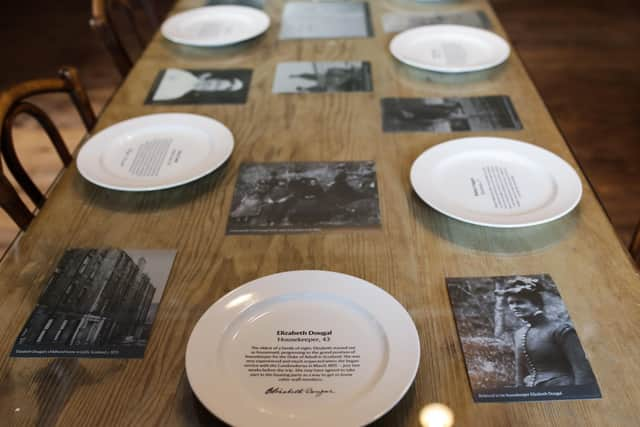

John said: “The person that found it phoned me very excitedly on a Saturday evening in January and said, ‘how many contemporary artefacts do you have from this event?’ He knew of course the answer was zero. He said, ‘Well, you’ve got one now’. I couldn’t believe it.
“We took it back down to the jetty so it completed its journey. That’s the point that it left from. It took 125 years to get back albeit by a circuitous route.”
The oar was one of the few items from the boat found in the immediate aftermath of the disappearance of the vessel and its passengers.
Advertisement
Hide AdAdvertisement
Hide AdJohn said: “The oar and some of bits and pieces of floating paraphernalia wee discovered the day after the boat was lost. At the time there were no clues as to what happened. There were search parties out on the lough, other than some floating debris nothing was found that told them very much.
“It was months afterwards that four of the bodies were recovered. Not that they really helped at all in the story of what happened, but at least it brought some closure to the families.”
One of those who perished was Joseph Grainge, the house steward and most senior member of staff. A photo of him takes his place at the table in the exhibition in what would have been the housekeepers room.
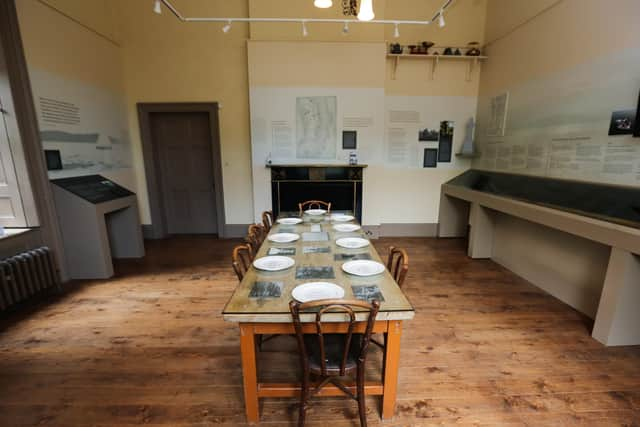

John said: “He’s wearing a gold watch chain. That was one of the items that helped in the identification of his body. The photo came from a great granddaughter who now lives in California.”
Search for wreck is getting narrower
Advertisement
Hide AdAdvertisement
Hide AdDelving into the archives to uncover the truth behind what happened to the Mountstewart yacht, the team of seven volunteers have spent over six years travelling around the country on a voyage of discovery.
From newspaper reports, family archives at Mount Stewart and public archives and other sources, they have traced descendants of those who died, including one lady in California whose great grandfather was Joseph Grainge, house steward at Mount Stewart.
Research has retrieved details of the event which was major news in its day with coverage in papers across the UK.
The Marquis of Londonderry said the people lost were friends as much as servants, reflecting the impact it had on the household. Even Queen Victoria is recorded as having sent a telegram of condolences – although the telegram has not yet been found.
The group have also used technology in their research.
Advertisement
Hide AdAdvertisement
Hide AdDrones, sonar and 3D imagining have allowed them to plot the route taken by Mountstewart and produce a ‘probability box’, an area within which the boat is likely to have sunk.
Although the wreck has not yet been located, the search is narrowing. They have identified a number of anomalies on the lough bed, mostly in depth of about 12-15 metres, although one is in the main channel at 27 metres.
The team hope to explore them in more detail and discover the final resting place of the Mountstewart.
The work has led to an exhibition called ‘The Mystery of the Mountstewart’ which answers some of the questions surrounding the fateful event.
Advertisement
Hide AdAdvertisement
Hide Ad“We have all been on an incredible journey and it’s not over yet,” said John Orr.
“To date we have uncovered a great deal, and through our research we have discovered images, artefacts and documents.
“We’ve been able to put faces to the names and identify the backgrounds and personalities of those who lost their lives.
“We’ve learnt a lot about the people involved, we’ve got to know them and what they did in their work in the houses in the late 1890s.”
Research group find unmarked grave and boat’s original oar
Advertisement
Hide AdAdvertisement
Hide AdFunded by the Department for Communities and The National Lottery Heritage Fund, ‘The Mystery of the Mountstewart’ exhibition presents some of the evidence gathered by the research team to date.
It includes historic images, press clippings, eye witness accounts and more – offering a poignant insight into life at Mount Stewart during the 19th-century.
The group made some important discoveries including the existence of the unmarked grave of William Start in a churchyard in Portaferry and an original oar from the boat in a farmer’s barn on the Mount Stewart estate, all of which is explored in more detail in the exhibition.
Frances Bailey, senior national curator for the National Trust, said: “This project has given us a glimpse into the lives of those lost and of those who searched and grieved for them in a powerful and sensitive way and provides an insight into their working environment as well as their private lives and families.
Advertisement
Hide AdAdvertisement
Hide Ad“It has opened a window onto life at Mount Stewart in the late 19th century and greatly enriched our understanding and appreciation of the mutually respectful, even friendly, relationships between the Londonderrys and their staff.
“This research project was born from a chance discovery by a wonderful team of volunteers. It was fed by their enthusiasm, deep interest and empathy for those lost and those left behind; it was delivered with great professionalism and integrity. I can’t thank them enough for the work they have done and the rigour with which they have pursued it.”
Paul Mullan, NI director of The National Lottery Heritage Fund, said: “We are grateful to the Department for Communities for providing this funding and enabling us to help a wide range of organisations and individuals as they recover from the impact of the Covid-19 pandemic.
“This new National Trust exhibition highlights the intrinsic role that heritage plays in all of our lives. No matter where we come from, or what we do, we all have a story to tell. And although this story is a tragic one, it’s an important part of local history that should be preserved.
Advertisement
Hide AdAdvertisement
Hide Ad“It also demonstrates how heritage can bring people together and it’s great that even more people will have the opportunity to better understand their local heritage through this project.”
Story was almost forgotten
Six years of volunteer research has revealed the mystery of a forgotten 19th-century boat disaster which claimed the lives of eight people on Strangford Lough.
Christopher Warleigh-Lack, property curator at Mount Stewart, said: “This exhibition, ‘The Mystery of the Mountstewart’, is testament to the importance of research.
“It tells a story that had become almost forgotten, which piece by piece has been revealed and shared.
Advertisement
Hide AdAdvertisement
Hide Ad“What we see behind this exhibition is a long period of dedication from a group of committed volunteers, all bringing their own skills, experience, and nuance to the story. And for that, we are grateful.”
John Orr said: “The hope is, with people coming to see it they might have stories to share and we can unravel the mystery further.”
The exhibition opens today at Mount Stewart, Newtownards, Co Down.
Entrance is free for National Trust members and ticket holders. Pre-booking is recommended, especially at weekends.
Advertisement
Hide AdAdvertisement
Hide AdFor more information visit www.nationaltrust.org.uk/mount-stewart
A message from the Editor:
Thank you for reading this story on our website. While I have your attention, I also have an important request to make of you.
With the coronavirus lockdown having a major impact on many of our advertisers - and consequently the revenue we receive - we are more reliant than ever on you taking out a digital subscription.
Subscribe to newsletter.co.uk and enjoy unlimited access to the best Northern Ireland and UK news and information online and on our app. With a digital subscription, you can read more than 5 articles, see fewer ads, enjoy faster load times, and get access to exclusive newsletters and content. Visit https://www.newsletter.co.uk/subscriptions now to sign up.
Advertisement
Hide AdAdvertisement
Hide AdOur journalism costs money and we rely on advertising, print and digital revenues to help to support them. By supporting us, we are able to support you in providing trusted, fact-checked content for this website.
Alistair Bushe
Editor